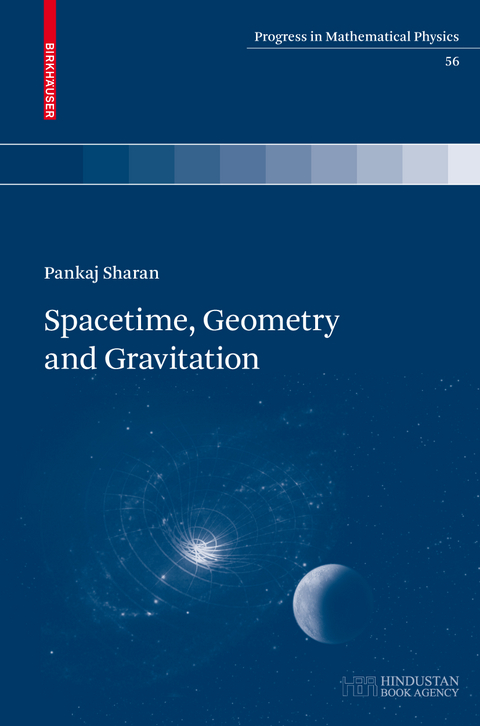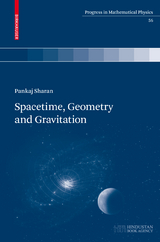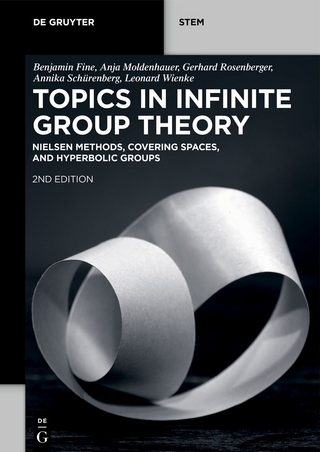Spacetime, Geometry and Gravitation
Springer Basel (Verlag)
978-3-7643-9970-2 (ISBN)
This is an introductory book on the general theory of relativity based partly on lectures given to students of M.Sc. Physics at my university. The book is divided into three parts. The ?rst part is a preliminary course on general relativity with minimum preparation. The second part builds the ma- ematical background and the third part deals with topics where mathematics developed in the second part is needed. The ?rst chapter gives a general background and introduction. This is f- lowed by an introduction to curvature through Gauss' Theorema Egregium. This theorem expresses the curvature of a two-dimensional surface in terms of intrinsic quantitiesrelatedtothein?nitesimaldistancefunctiononthesurface.Thestudent isintroducedtothemetrictensor,Christo?elsymbolsandRiemanncurvaturet- sor by elementary methods in the familiar and visualizable case of two dimensions. This early introduction to geometric quantities equips a student to learn simpler topics in general relativity like the Newtonian limit, red shift, the Schwarzschild solution, precession of the perihelion and bending of light in a gravitational ?eld. Part II (chapters 5 to 10) is an introduction to Riemannian geometry as - quired by general relativity. This is done from the beginning, starting with vectors and tensors. I believe that students of physics grasp physical concepts better if they are not shaky about the mathematics involved.
Spacetime.- What is Curvature?.- General Relativity Basics.- Spherically Symmetric Gravitational Field.- Geometry.- Vectors and Tensors.- Inner Product.- Elementary Differential Geometry.- Connection and Curvature.- Riemannian Geometry.- Additional Topics in Geometry.- Gravitation.- The Einstein Equation.- General Features of Spacetime.- Weak Gravitational Fields.- Schwarzschild and Kerr Solutions.- Cosmology.- Special Topics.
From the reviews:
"The book is structured into three parts. The first part ... offers preliminary topics on general relativity. ... The second part is a comprehensive and accurate incursion in the mathematical background of relativity theory. ... The last part, entitled Gravitation, contains six chapters dealing with the Einstein equation ... cosmology and special topics. Interesting exercises with complete answers simplify the understanding of the presented material. The textbook is recommended to advanced graduates and researchers." (Ferenc Szenkovits, Studia Universitatis Babes-Bolyai, Mathematica, Vol. LV (4), December, 2010)
"This book provides the reader with a very gentle introduction to the main ideas and concepts of general relativity. This work is particularly suitable for students who are interested in general relativity or are beginning to study this subject. Moreover, the author presents the reader with a number of problems and provides worked-out solutions, which will surely help the reader to obtain a deeper of interest to students who seek a smooth introduction to general relativity." (Guglielmo Fucci, Mathematical Reviews, Issue 2011 m)
| Erscheint lt. Verlag | 18.9.2009 |
|---|---|
| Reihe/Serie | Progress in Mathematical Physics |
| Zusatzinfo | XIV, 355 p. |
| Verlagsort | Basel |
| Sprache | englisch |
| Maße | 155 x 235 mm |
| Gewicht | 820 g |
| Themenwelt | Mathematik / Informatik ► Mathematik ► Geometrie / Topologie |
| Naturwissenschaften ► Physik / Astronomie ► Astronomie / Astrophysik | |
| Naturwissenschaften ► Physik / Astronomie ► Relativitätstheorie | |
| Naturwissenschaften ► Physik / Astronomie ► Theoretische Physik | |
| Schlagworte | Christoffel symbol • Friedman equation • General relativity • general theory of relativity • Gravitation • Gravitational Wave • Gravitation / Schwerkraft • Gravity • Kerr solution • Raum-Zeit-Theorie • Relativitätstheorie • Relativity • Riemannian Geometry • Schwarzschild solution • Spacetime • Theorema egregium • weak gravitational field |
| ISBN-10 | 3-7643-9970-8 / 3764399708 |
| ISBN-13 | 978-3-7643-9970-2 / 9783764399702 |
| Zustand | Neuware |
| Haben Sie eine Frage zum Produkt? |
aus dem Bereich




